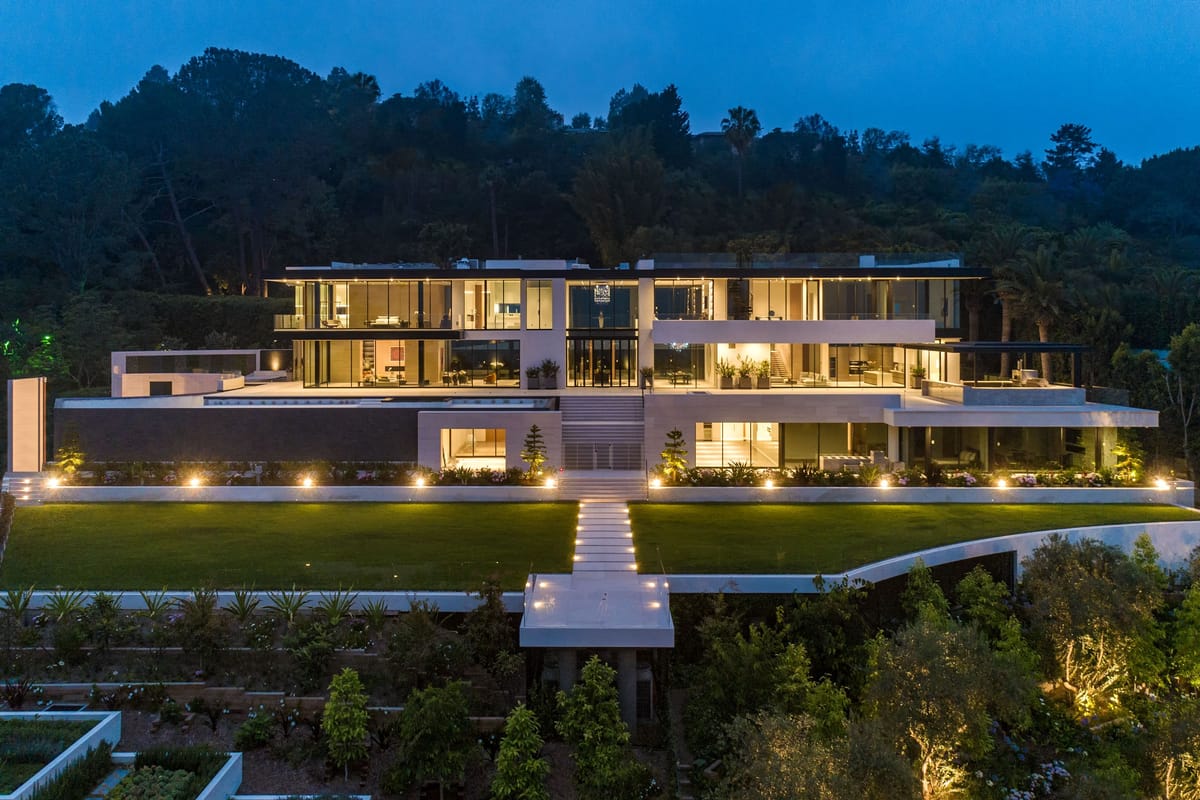How To Afford A Million Dollar House: A Practical Guide For High-income Individuals

Buying a million-dollar home may seem like a dream for many, but for high-income individuals, it’s an attainable goal with the right strategies in place. Whether you are looking for a luxury home, a high-end investment property, or a family estate, understanding how to finance, budget, and plan for such a significant purchase is crucial.
This guide will walk you through the steps necessary to afford a million-dollar home, from calculating affordability to exploring mortgage options, tax benefits, and financial planning. While this journey requires careful consideration, it doesn’t have to be overwhelming. Here’s how to approach it in a smart, practical way.
Table of Contents
- Understanding Affordability: Can You Truly Afford a Million Dollar House?
- 1.1. Calculating Your Budget
- 1.2. Income Requirements
- 1.3. Debt-to-Income Ratio
- Saving for a Down Payment
- 2.1. How Much to Save
- 2.2. Investment Strategies for High-Income Earners
- 2.3. Timeframe for Saving
- Exploring Mortgage Options for High-Income Individuals
- 3.1. Jumbo Loans
- 3.2. Fixed-Rate vs Adjustable-Rate Mortgages
- 3.3. Getting Pre-Approved
- Additional Costs to Consider
- 4.1. Property Taxes
- 4.2. Homeowner’s Insurance
- 4.3. Maintenance and Repairs
- Tax Benefits and Financial Planning
- 5.1. Mortgage Interest Deduction
- 5.2. Capital Gains and Home Equity
- 5.3. Long-term Wealth Building Through Real Estate
- Investing in Luxury Real Estate: Is It Worth It?
- 6.1. Evaluating the Market
- 6.2. Pros and Cons of High-End Property Ownership
- 6.3. ROI and Resale Value Considerations
- Tips for Navigating the Luxury Real Estate Market
- 7.1. Working with a High-End Real Estate Agent
- 7.2. Negotiation Tactics
- 7.3. Understanding the Unique Features of Million-Dollar Homes
- Conclusion: Making Smart Financial Decisions on Your Path to Home Ownership

1. Understanding Affordability: Can You Truly Afford a Million Dollar House?
Before jumping into the purchase of a million-dollar home, it’s essential to determine whether you can truly afford it. This involves more than just looking at the price tag — you'll need to evaluate your financial health, including income, savings, debts, and long-term goals.
1.1. Calculating Your Budget
One of the first steps to affording a high-end property is calculating how much house you can afford. A common rule of thumb is to spend no more than 30-35% of your monthly gross income on housing costs, including mortgage payments, property taxes, and insurance. For high-income individuals, this percentage allows you to maintain a comfortable lifestyle without being "house poor."
- Example: If you earn $400,000 per year, your monthly gross income is approximately $33,333. Using the 30% rule, you can afford to spend around $10,000 per month on housing costs, which may include a mortgage, property taxes, and insurance.
1.2. Income Requirements
For a million-dollar home, lenders typically require a substantial income to qualify for a mortgage. While every lender has different criteria, many suggest that your annual income should be at least three to four times the cost of the home. For a million-dollar home, this translates to an income of around $250,000 to $400,000 per year.
Keep in mind that if you have significant debt (student loans, credit cards, etc.), this will affect the amount you can borrow.
1.3. Debt-to-Income Ratio
Your debt-to-income ratio (DTI) is another important factor that lenders consider when approving mortgages for high-priced homes. Most lenders prefer a DTI of 36% or lower, including your mortgage payments. To calculate your DTI, divide your total monthly debt payments by your gross monthly income.
- Example: If you pay $2,000 in debt each month and your gross income is $33,333, your DTI would be around 6%, which is well below the 36% threshold.
2. Saving for a Down Payment
The down payment is one of the largest hurdles for many aspiring homeowners. For a million-dollar house, the typical down payment is 20%, which equates to $200,000. While high-income earners may be able to save this amount more quickly, it’s still important to plan carefully.
2.1. How Much to Save
If you’re aiming for a 20% down payment, you need to save $200,000. However, if you prefer to put down a smaller amount, some lenders offer jumbo loans with 10-15% down, though this often results in higher monthly payments and possibly private mortgage insurance (PMI).
2.2. Investment Strategies for High-Income Earners
For high-income individuals, saving for a down payment can be accelerated through smart investment strategies. Consider:
- Stock Market: Investing in index funds or blue-chip stocks can yield returns that significantly outpace a regular savings account.
- Real Estate Investment Trusts (REITs): These can be a lower-risk way to invest in real estate without the complications of property management.
- High-Yield Savings Accounts: For more conservative investors, these accounts offer better interest rates than traditional savings accounts.
2.3. Timeframe for Saving
Depending on how much you can allocate toward savings each month, your timeframe for saving the down payment can vary:
- Example: If you save $5,000 per month, it will take you 40 months (just over 3 years) to save $200,000. If you save $10,000 per month, it will take you only 20 months (less than 2 years) to reach your goal.

3. Exploring Mortgage Options for High-Income Individuals
Once you've saved for a down payment, the next step is exploring mortgage options. High-income earners have access to a range of mortgage products, including jumbo loans, which are designed for homes priced above conventional loan limits.
3.1. Jumbo Loans
A jumbo loan is a mortgage that exceeds the conforming loan limits set by the Federal Housing Finance Agency (FHFA). For a million-dollar house, a jumbo loan is typically required. These loans come with stricter requirements, including:
- Higher credit scores (usually 700 or above)
- Lower debt-to-income ratios
- Larger down payments (often 20-30%)
3.2. Fixed-Rate vs Adjustable-Rate Mortgages
For high-income individuals, the choice between a fixed-rate mortgage (FRM) and an adjustable-rate mortgage (ARM) is important.
- Fixed-Rate Mortgage: Offers predictable monthly payments and is ideal if you plan to stay in the home for a long period.
- Adjustable-Rate Mortgage: Offers lower initial rates but can fluctuate after a set period. This can be beneficial if you plan to sell the house within a few years or expect your income to increase significantly.
3.3. Getting Pre-Approved
Before shopping for homes, it’s wise to get pre-approved for a mortgage. Pre-approval gives you a clear idea of how much you can borrow and shows sellers that you’re a serious buyer. The pre-approval process involves submitting your financial information to a lender, who will then provide a pre-approval letter indicating how much they're willing to lend.
4. Additional Costs to Consider
The cost of buying a million-dollar home goes beyond the purchase price. As a homeowner, you’ll need to budget for ongoing expenses, including property taxes, insurance, and maintenance.
4.1. Property Taxes
Property taxes can vary widely depending on the location of the home. In general, you can expect to pay between 1-3% of the home’s value in property taxes each year. For a million-dollar house, that translates to $10,000 to $30,000 annually.
- Tip: Research property tax rates in your desired area before purchasing, as this can significantly affect your monthly housing costs.
4.2. Homeowner’s Insurance
Homeowner’s insurance is another critical cost to factor in. The cost of insurance depends on several factors, including the location, size, and features of the home. On average, homeowner’s insurance for a million-dollar home can cost $3,000 to $5,000 per year.
4.3. Maintenance and Repairs
Maintaining a high-end property can be more expensive than a standard home. Budget for regular maintenance (landscaping, HVAC servicing, etc.) as well as potential repairs. Experts suggest setting aside 1-2% of the home’s value each year for maintenance and repairs, which amounts to $10,000 to $20,000 annually for a million-dollar home.





